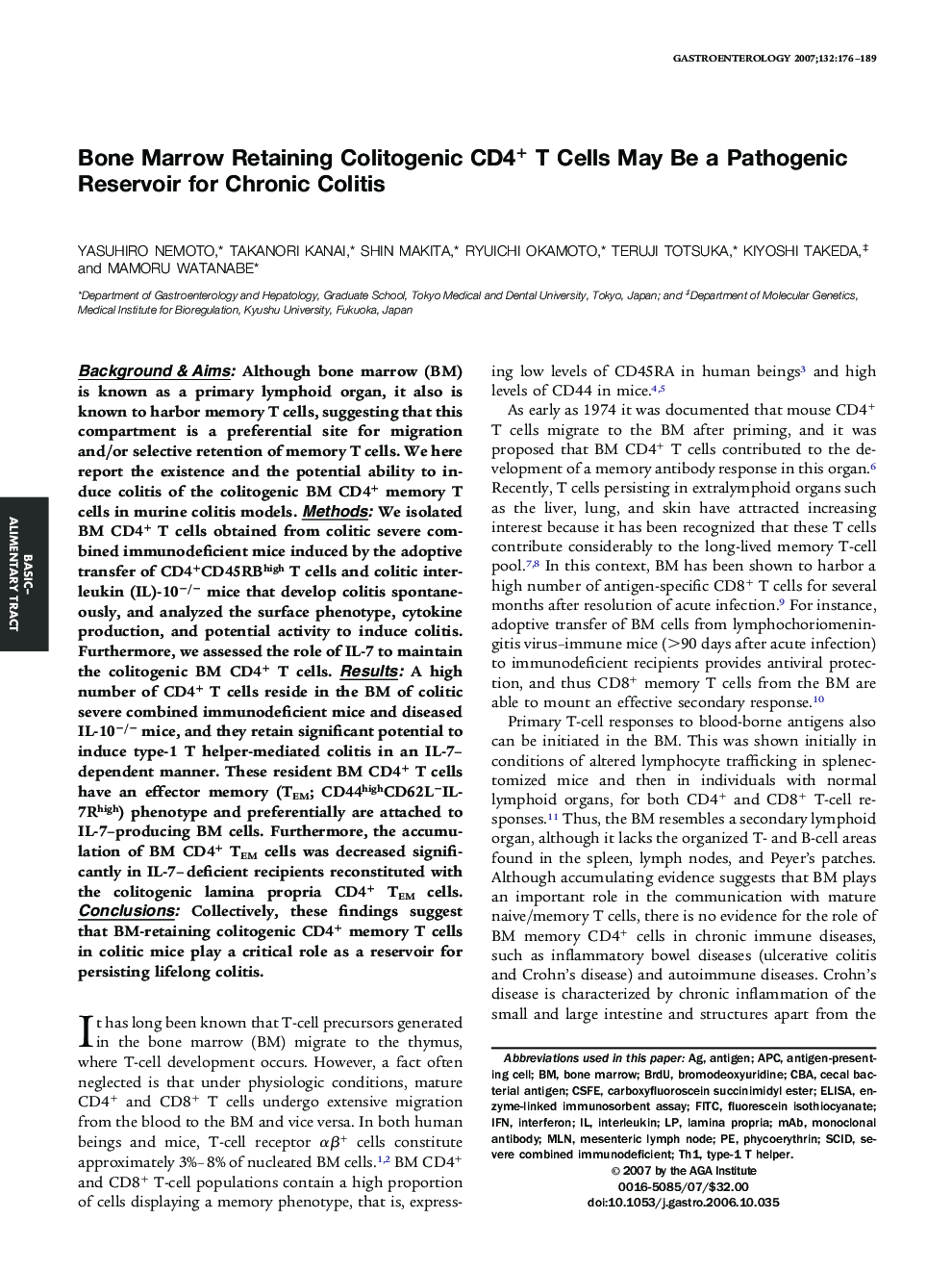| Article ID | Journal | Published Year | Pages | File Type |
|---|---|---|---|---|
| 3296316 | Gastroenterology | 2007 | 14 Pages |
Background & Aims: Although bone marrow (BM) is known as a primary lymphoid organ, it also is known to harbor memory T cells, suggesting that this compartment is a preferential site for migration and/or selective retention of memory T cells. We here report the existence and the potential ability to induce colitis of the colitogenic BM CD4+ memory T cells in murine colitis models. Methods: We isolated BM CD4+ T cells obtained from colitic severe combined immunodeficient mice induced by the adoptive transfer of CD4+CD45RBhigh T cells and colitic interleukin (IL)-10−/− mice that develop colitis spontaneously, and analyzed the surface phenotype, cytokine production, and potential activity to induce colitis. Furthermore, we assessed the role of IL-7 to maintain the colitogenic BM CD4+ T cells. Results: A high number of CD4+ T cells reside in the BM of colitic severe combined immunodeficient mice and diseased IL-10−/− mice, and they retain significant potential to induce type-1 T helper-mediated colitis in an IL-7–dependent manner. These resident BM CD4+ T cells have an effector memory (TEM; CD44highCD62L−IL-7Rhigh) phenotype and preferentially are attached to IL-7–producing BM cells. Furthermore, the accumulation of BM CD4+ TEM cells was decreased significantly in IL-7–deficient recipients reconstituted with the colitogenic lamina propria CD4+ TEM cells. Conclusions: Collectively, these findings suggest that BM-retaining colitogenic CD4+ memory T cells in colitic mice play a critical role as a reservoir for persisting lifelong colitis.
